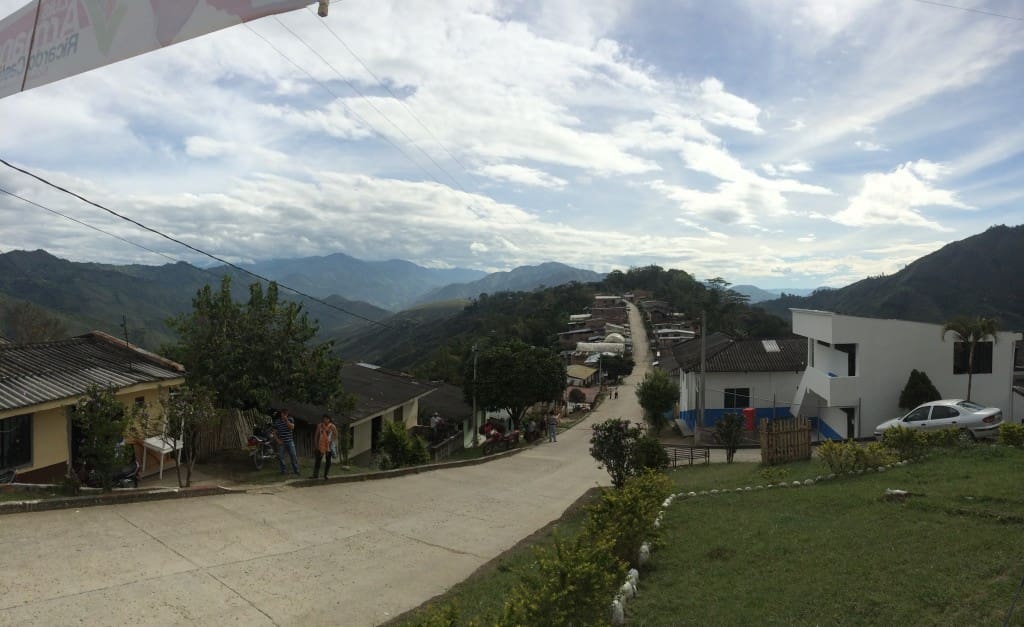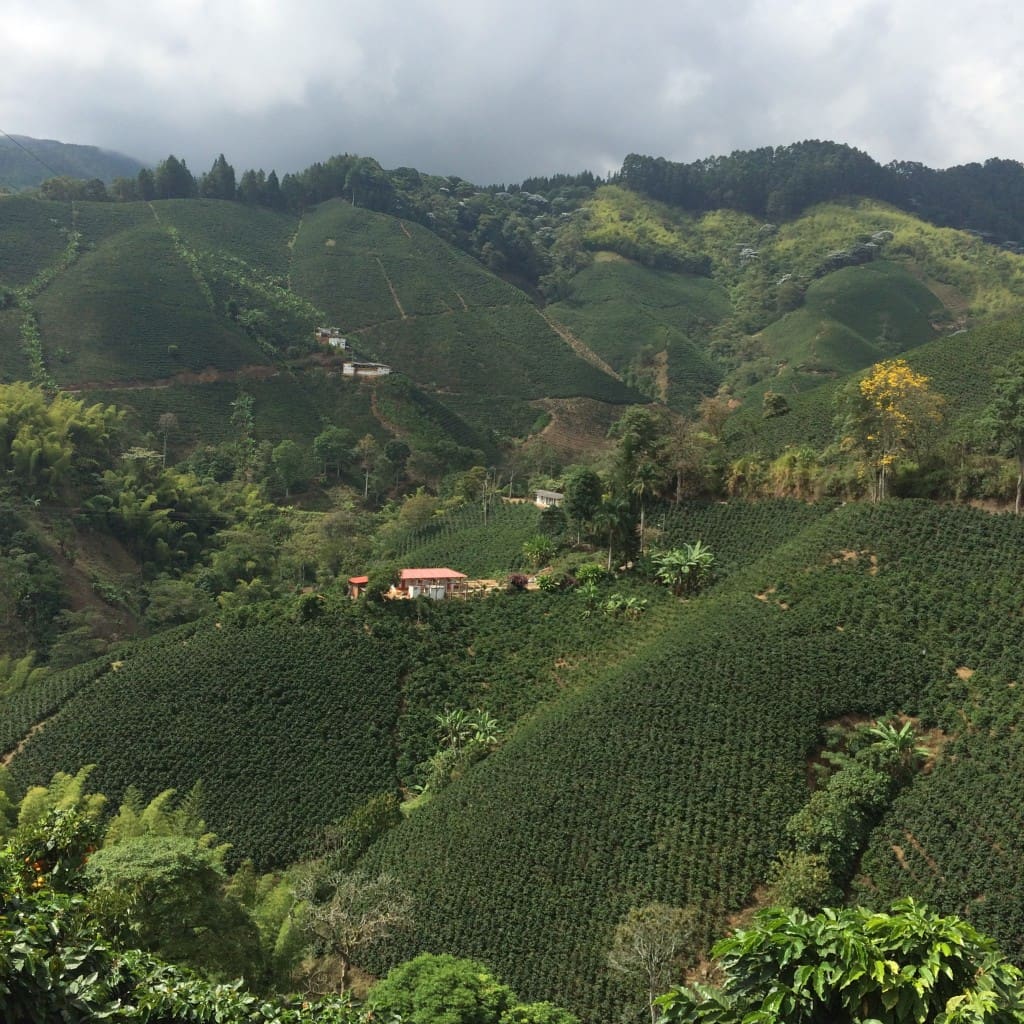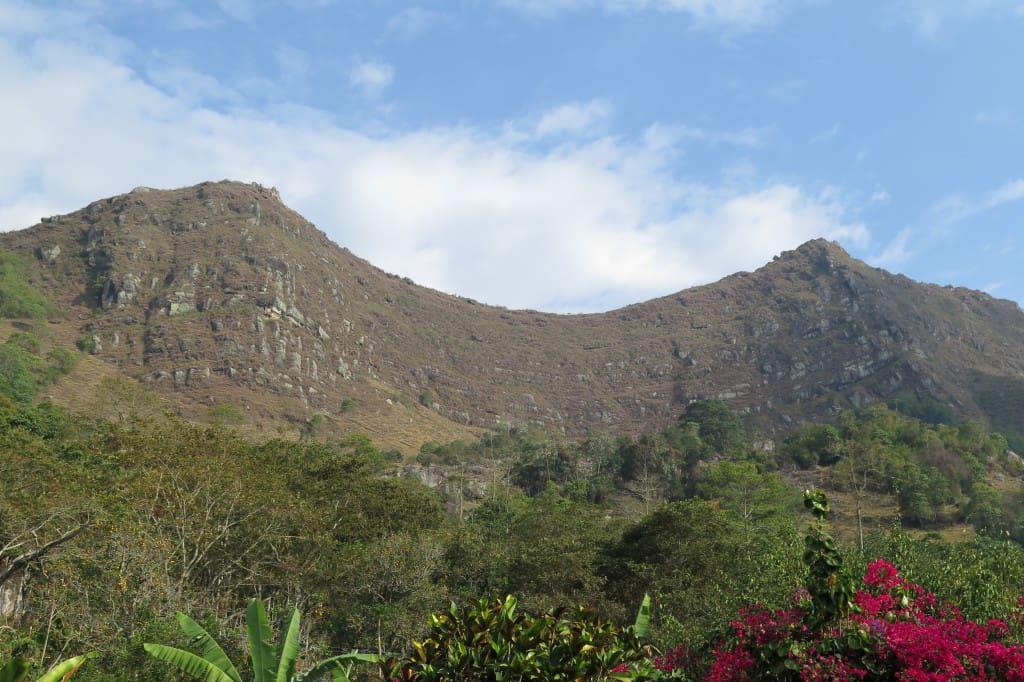ASPROTimaná (Timaná, Huila)
We had a great visit with Robinson Figueroa, the head of the co-op, and a number of the other members of ASPROTimaná. This co-op in the town of Timaná consists of over 600 growers, and produces roughly 152 containers of coffee every year. To date, our work with them has focused on their highest quality micro lots (which is a segment of the industry the group has been pushing into in recent years) but we are beginning to do some volume purchases from them as well.
The bulk of the group’s plantings are in Castillo and Variedad Colombia, though a number of the farmers produce limited amounts of Caturra. Robinson is currently experimenting with a new variety garden on one of his farms, and will send us samples of the Typica, Bourbon, and Gesha trees he has recently planted.
Our visit began at the co-op offices, where we cupped 24 micro-lots and admired ASPROTimaná’s exceptional level of organization. Their receiving station is clean and well-organized, and we were struck by the level of care the group takes in tracking each grower’s incoming lots, and analyzing coffee quality. During the cupping we discovered a broad range of profiles, and talked with a few of the growers about their practice of letting Castillo cherries ripen a few days longer than they would the Caturra or Colombia varieties. We also learned that growers like to give the Castillo a bit of extra fermentation time. Given the high scores on the cupping table, it appears the new practices have been a success.
After the cupping, we piled into an old Jeep with a monstrously powerful stereo, and headed out for lunch and a visit to Robinson Figueroa’s farm, La Esperanza. After the harrowing experience of seeing my friends hauled up the mountain in a basket made to transport coffee (200 feet above ground, thin cables, lack of legal disclaimers) we got to talk more with Robinson about how the members of the group work together to share best farming practices, and discover new markets. The group’s commitment to the supply chain and their dedication to quality were evident in everything from the health and productivity of the trees to the exceptional cleanliness of the on-farm beneficios we saw. Our visit left us very encouraged about the group’s future, and eager to expand our work with them.
Monserrate

Our tenth year working with Monserrate was decidedly celebratory. We received an exceptional number of samples for this year’s micro lot competition (58) and the results were fantastic. Our top ten coffees all averaged nearly 87, with the winner coming in above 88. Amazing success for producers who just ten years ago sold their coffee at market price, and generally scored right around 80 on the SCAA scale.
Although the gringo visitors got their butts handed to them in soccer by the village kids once again, we got a lot out of our time in Monserrate. Growers remain happy with our supply chain, and our kick-ass competition judges were thrilled with the quality of the coffees we tried.
Quindio/Valle de Cauca
Finca Buenos Aires
The exploratory phase of our trip was spent in Quindio and Valle de Cauca. Upon arrival in Armenia, we headed out to Finca Buenos Aires, a gorgeous and impeccably-managed farm, where they manage to plant 8,000 plants per hectare. (To put that in perspective, the average plants/hectare in Colombia is 3-4,000.) We met a young man named Gabriel who manages the farm, and learned that he is putting his energy into improving quality these days. To that end, he is experimenting with cherry ripeness and fermentation times, and has planted a section of his farm with Gesha variety. Gabriel promised that he would send samples to our lab for analysis, so were looking forward to learning more about how his coffees perform in the cup.

Finca Santiago Londono
The next day we left Quindio to visit a farm just over the departmental border, in Valle de Cauca. The farm we visited, called Finca Mallorca, has been in the family of our friend, Santiago Londono, producing coffee since 1932. Like Gabriel, he’s just getting into specialty. As evidence of his commitment to high end coffee, Santiago is installing a new micro-lot line of machinery for his (high volume, well-organized) wet mill. He, too, has an experimental variety garden planted with Yellow Bourbon and some Gesha. Also, as with Gabriel, he has promised to send samples of the new plantings when they are available.
Finca La Fragua (Cundinamarca)
The big news from Finca La Fragua is that our Colombian babies are finally coming the United States. With contributions from Racafe and Atlas, La Fragua owner, Juanita, planted a 5.3 hectare plot three years ago, so we (La Fragua, Racafe, Atlas, our clients) could learn more about which varietals work best on her land. Now, for the first time, we harvested small amounts of the Tabi, Red Bourbon, Gesha, Castillo, Castillo Santa Barbara, and Typica. We’re looking forward to trying them all with our clients, and reporting back to Juanita about which varieties bring the best results in the cup. Juanita will be doing more planting in the next year based on our results.

We had a fantastic day touring the beneficio, and exploring the farm on horseback. Despite the fact that this year’s crop was particularly robust, the farm is clearly suffering through a drought. Juanita tells us she hasn’t had rain since March, and things are definitely looking a bit desiccated. She expects to get good rain by end of September, so we’ll keep our fingers crossed. In the meantime, her operation is running well, and her coffees are tasting better than ever.